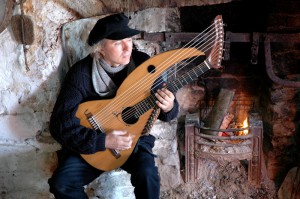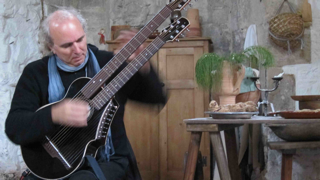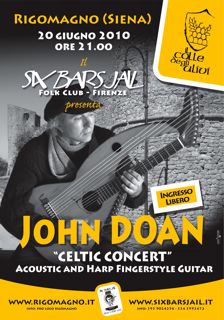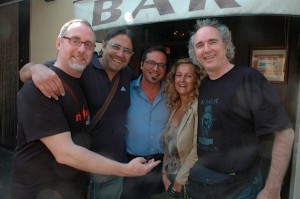Press Release
 (Bath, UK). — Emmy nominee and master harp guitarist John Doan with family roots to Bath and Burton, will perform at the Chapel Arts Centre, St James’s Memorial Hall as part of his European Tour 2013. Chapel Arts Centre is located at Lower Borough Walls, Bath, BA1 1QR. The show is scheduled for 8pm on Tuesday, May 21, 2013. Tickets are advance: £8.00, Door: £10.00. For more information, call the Chapel Arts Centre at 01225 461700.
(Bath, UK). — Emmy nominee and master harp guitarist John Doan with family roots to Bath and Burton, will perform at the Chapel Arts Centre, St James’s Memorial Hall as part of his European Tour 2013. Chapel Arts Centre is located at Lower Borough Walls, Bath, BA1 1QR. The show is scheduled for 8pm on Tuesday, May 21, 2013. Tickets are advance: £8.00, Door: £10.00. For more information, call the Chapel Arts Centre at 01225 461700.
A “Celtic Pilgrimage with John Doan” features music from John’s award winning recording “Eire – Isle of the Saints” (Winner of “Best Celtic Album of the Year”) and Wayfarer (also nominated for the same title).
Concert Description
 Master harp guitarist and storyteller John Doan is a Bard for the 21st Century bringing back soulful and provocative musical sketches from a pilgrimage to the most sacred sites of the British Isles. “Thin Places,” as they were once called, were believed to be where the space between heaven and earth, and past and future, were thinly divided. John shares what he found there inspired by breathtaking landscapes, historic ruins, and dynamic stories underlying the faith and vision of a people who shaped the world we have come to call our own. He now leads his audiences back down ancient paths to locations made famous by St. Patrick and the “Twelve Apostles of Ireland” along winding roads to secluded sanctuaries and by boat to remote island retreats. Adventurous, thoughtful, and renewing, this is a journey memorable for its achingly beautiful moments and encouraging spirit. Continue reading
Master harp guitarist and storyteller John Doan is a Bard for the 21st Century bringing back soulful and provocative musical sketches from a pilgrimage to the most sacred sites of the British Isles. “Thin Places,” as they were once called, were believed to be where the space between heaven and earth, and past and future, were thinly divided. John shares what he found there inspired by breathtaking landscapes, historic ruins, and dynamic stories underlying the faith and vision of a people who shaped the world we have come to call our own. He now leads his audiences back down ancient paths to locations made famous by St. Patrick and the “Twelve Apostles of Ireland” along winding roads to secluded sanctuaries and by boat to remote island retreats. Adventurous, thoughtful, and renewing, this is a journey memorable for its achingly beautiful moments and encouraging spirit. Continue reading

 Following is an interview published after my visit and concert in Rigomagno – a thousand year old hilltop village in Tuscany, Italy. Used with permission.
Following is an interview published after my visit and concert in Rigomagno – a thousand year old hilltop village in Tuscany, Italy. Used with permission.